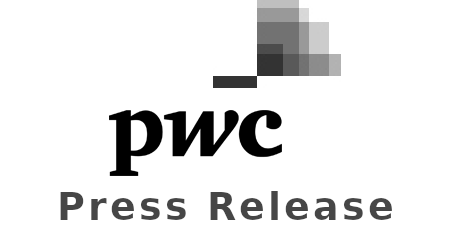
Market volume for printed products will rise to 22.6 billion euros by 2030
(Sorry for any errors in the translation)
Aerospace (23%), Medical (23%) and Automotive (15%) have the largest annual growth potential / certification of 3D printing technologies and development of new print designs as key growth drivers
Prototypes are already being produced in 3D production facilities in production halls, but in the coming years, the process will only reach its full economic potential: By 2030, the global market for 3D printing products in the industry will average between 13 and 23% per year. market volume of EUR 22.6 billion, according to a recent analysis by Strategy &, the strategy consulting firm of PwC, in cooperation with Materialize’s 3D printing specialists. Optimized printing methods and materials as well as greater implementation in business processes and the establishment of new business models are growth drivers. The process opens up new opportunities, especially for the aerospace industry with average annual growth rates of 23% and for the automotive industry (+ 15%) Potentials in production: In the future, spare parts can be produced on-site as needed. For medical technology too, 3D printing offers great opportunities, with projected average growth rates of 23% per year, followed by industry (+ 14%) and retail (+ 13%).
“The accelerated and more flexible development and production through the 3D printing process will unleash enormous economic power over the next few years. The growth opportunities are huge: only 18% of companies currently use 3D printing, but in the next five years we expect an increase to one third of the manufacturing companies. Therefore, it is now necessary to consider how 3D technologies can be profitably integrated into one’s own business model and how they can strategically expand the product portfolio, “explains Christian Foltz, Partner at Strategy & Germany.
3D printing
Within the aerospace industry, Strategy & Experts predict a 3D print market volume of $ 9.59 billion worldwide by 2030. In 2015, only 0.49% of 3D printed products were manufactured in the industry, and by 2030 this percentage will increase to 5.2%. In the next two years, the certification of 3D printing technologies will be the central growth factor. By 2030, the design tailored to 3D printing processes will play the most important role.
In medical technology, the 3D printing market volume increased from 0.26 billion euros (as of 2015) to 5.59 billion euros (2030). “By 2020, the advances in 3D printing in medical technology will be marked above all by the reinvention of existing products and business models. On the other hand, the success of companies with promising 3D printing projects depends on the development of new materials and optimized printing processes, “comments Foltz.
In the automotive industry, the 3D printing market volume is estimated to grow from € 0.34 billion (2015) to € 2.61 billion (2030). Here, the focus is still in the prototype development. “In the future, it is conceivable that manufacturers themselves print out individual components that are only needed in smaller quantities, thereby saving time and costs compared to the previous supply chain. Here, too, specialized 3D printing suppliers will divide the lion’s share of the value chain among themselves. Just-in-time delivery will turn on-demand 3D printing, “says Foltz. Even OEMs will probably set up their own certified 3D printers in their authorized workshops in the not too distant future, which will print original spare parts as needed, thereby increasing margins in the aftersales sector through reduced logistics and storage costs.
An effect that retailers are already benefiting from today in conjunction with individual, highly advanced brands: Customers can design products digitally and have them printed on-site. In terms of total retail sales, Strategy & Analysis predicts that the 3D printing market will grow from € 0.3 billion (2015) to € 1.89 billion (2030). In the industrial sector (excluding the automotive industry) experts expect an increase from 0.44 billion euros (2015) to 2.98 billion euros (2030). “The rapid technological development of 3D printing can fundamentally change established structures as well as the interaction between research and development, suppliers, manufacturers and retailers. The players involved along the value chain must therefore systematically deal with the opportunities as well as the risks of this technology and analyze how the resulting potential can be used for their business, “concludes Foltz.
Presse- und Medienkontakt
PwC Strategy& (Germany) GmbH
Telefon: +49 (89) 545 25 613




Neu / New / Nouveau / Nuovo Comments